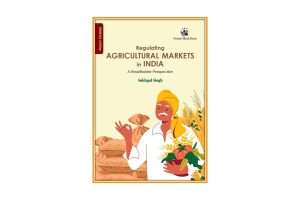C George Thomas
Ane Books Pvt Ltd
July 2023
690 pages
ISBN: 978-81-19160-62-4
Price: INR 995 (Paperback)
Apart from its primary role of enhancing crop yields, boosting farm income, and maintaining sustainability, the discipline of agronomy is currently embracing new challenges such as meeting food and water security under climate change, conservation of agroecosystems, offering ecosystem services, waste management and overall nutrition and health. Owing to these reasons, I was fascinated by the title and subject matter of the book Tropical Agronomy: Principles, Heritage, and Gender Perspectives by Professor C. George Thomas.
The book is comprehensive and written in an easy-to-read textbook style with citations wherever necessary. This is complimented by photographs and line diagrams that make information more digestible to undergraduate students. The 22 chapters have a wealth of information on the theoretical and practical aspects of agronomy, including viable solutions to certain topical issues. It discusses basic agronomic principles, the origin and diffusion of crops, the history and heritage of agriculture, agriculture education, and gender perspectives in agriculture. Its distinctive features are the sections on crop ecology, origin of agriculture and agricultural systems, agricultural heritage of India, agricultural research and education systems, the aftermath and critique of the green revolution and gender perspectives in agriculture.
What drew my attention in the book, compared to standard textbooks on agronomy, was the meaningful classification of crops based on their similarities and inter-relationships in Chapter 2. Crop development/improvement and biodiversity conservation programs are based on these similarities and inter-relationships. Agronomy is the oldest and a major branch of agriculture, and is the art, science, and business of producing crops for economic purposes. The information in this section is highly relevant to promote eco-tourism in order to accurately choose and plan compatible crops to be used in cropping/farming systems to enable complimentary effects. The section on special category of crops would aid the diversification of crops towards uses like bioenergy, soil amendment, and crop protection in biological farming.
The section on Crop ecology is an eye-opener for upcoming agronomists and provides meaningful insights into current problems in agriculture, given that high-input intensive farming is not affordable to all farmers. This calls for developing demand-led, efficient, inclusive, resilient and sustainable agri-food systems for the “4 betters”, namely better production, better nutrition, better environment, and better life. Currently, there is a lot of emphasis on ecological intensification in agriculture involving reduction of chemical/external inputs through reuse and recycling, working closely with nature, adopting nature-based solutions, and promoting farmer-inclusive innovations, for which the foundational principles can be extracted from this section.
Chapter 18 documents the origin of agriculture, centres of origin, diffusion of crops, crop introduction, inadvertent weed introduction, and major agricultural systems in practice around the world. The information on centres of origin and agricultural systems provides leads on evolving suitable biotic and abiotic stress management strategies in the context of climate change. The section also delves into the importance of conserving the rich biodiversity of our traditional and ethnic crops and including these as component crops in the prevalent systems of cultivation.
The book also examines the rich agricultural heritage of India. The five general criteria to identify prospective agricultural heritage systems and their scope in India are in particular appealing. Readers will appreciate that these heritage systems are no longer a relic of the past but make invaluable contributions to sustainable livelihoods, climate resilience and environmental conservation even today and will do so in the future as well, if they are conserved.
The section presenting thorough and updated information on agricultural research and education systems will aid aspirants planning to make a career in agriculture by expanding their horizons on opportunities for study and research both nationally and globally.
The distinctive feature of the book is the author’s analysis of the pros and cons of the green revolution with facts and figures, particularly relating to area, production and productivity of major crops in India. The author underlines the need to promote sustainability through the promotion of Good Agricultural Practices. I think we need to recommend alternative farming practices appropriate to different situations, regions, and crops that allow the sustainable production of safe food, while maintaining soil health and causing minimum disruption to the environment, rather than suggesting a specific agricultural system en masse for India. There is a huge body of evidence to show the advantages of alternative farming practices based on research in India and abroad, and the author may draw his own valid conclusions based on these. Including such a section or a chapter will definitely add more value to the book.
The inclusion of gender perspectives in agriculture in this textbook is very interesting, since it is acknowledged that women play a crucial role in agriculture from farm to fork. It reinforces the criticality of enhancing their understanding of better agronomic practices for enhancing production and achieving better nutritional outcomes. This chapter recognizes women’s contributions to agriculture as decision makers and adopters of technologies and gives greater exposure about their roles to all those who design, plan, implement, and evaluate interventions for agricultural and rural development.
Extension advisors understand how changing both farms and farmers is important. An updated understanding of agronomy is therefore critical for extensionists, especially now as they are being asked to follow different systems of agriculture, which may create confusion in their understanding of basic agricultural practices. Agronomists and extensionists therefore need to work together to solve the growing and complex global challenges that are exacerbated by changing climate.
On the whole, the book is a comprehensive source of information on almost all issues related to agronomy, supported by adequate evidences, research data, and justifications. The content is well organized and written in simple language and is based on the author’s long academic experience. Unfortunately, as mentioned by the author, weed science, irrigation and water management and dryland agriculture that have been excluded, could be included in a revised edition. So also agroecological farming strategies, which are currently being discussed globally.
This book can serve as a ready reference for students, scientists, teachers, trainers, extension personnel and practitioners of agriculture.
Suja G
 Dr Suja G is Principal Scientist (Agronomy) and Head, Division of Crop Production at the ICAR-Central Tuber Crops Research Institute (CTCRI), Thiruvananthapuram, Kerala (INDIA). She can be reached on (Email: suja.g@icar.gov.in; sujagin@yahoo.com)
Dr Suja G is Principal Scientist (Agronomy) and Head, Division of Crop Production at the ICAR-Central Tuber Crops Research Institute (CTCRI), Thiruvananthapuram, Kerala (INDIA). She can be reached on (Email: suja.g@icar.gov.in; sujagin@yahoo.com)





Add Comment